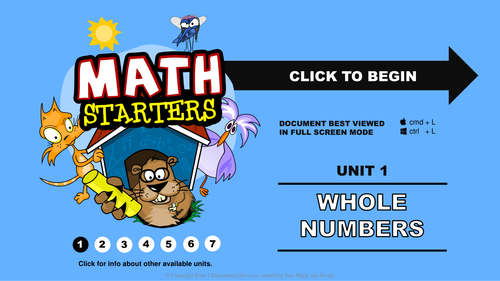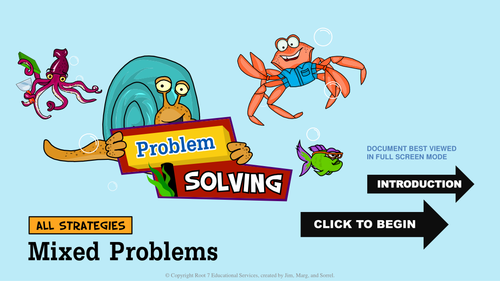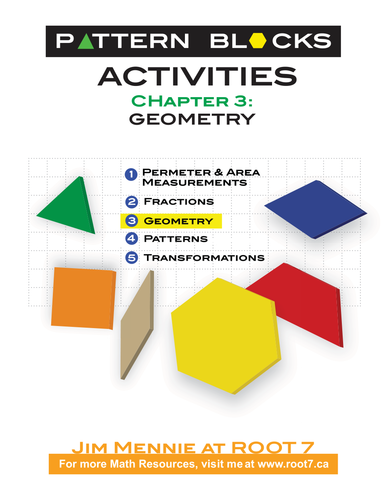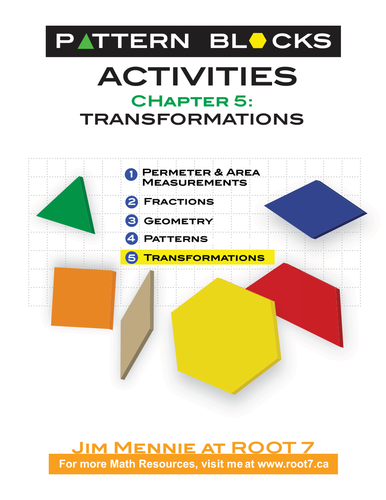
26Uploads
12k+Views
4k+Downloads
All resources

Math Starters Whole Numbers
These bright, colourful, thought provoking questions are designed to encourage and motivate learners in to become more involved in learning and enjoying mathematics. The over 40 high quality questions, with on-screen hints and answers, focus on whole numbers.
The resource can be used to start a lesson; to introduce or reinforce a concept; to develop and improve problem solving skills; support different ability levels and learning styles.
The resource can also be used in a resource centre, or as a fun way to learn in a home environment.

Math Problem Solving Strategies - Mixed Strategies
Two statements that can be found in almost any math curriculum are:
Students learn best if they are actively involved in their learning.
Students should be able to apply various strategies to solve problems.
This Mixed Problems unit gives students opportunities to solve problems using different strategies.
The unit begins with a worked example, showing different strategies for solving the same problem.
Each of the 30 colorful, interesting problems comes with a reminder of the 8 strategies covered in Math Problem Solving Strategies Units 1 through 8. All problems come with on screen hints, and solutions using alternative strategies.
This unit can be used on its own or after students have completed some, or all of the units covering the 8 problem solving strategies.

Pattern Blocks Chapter 3 - Geometry
Years of research on how children learn has shown that the use of manipulatives such as pattern blocks is a powerful tool for developing conceptual understanding of mathematics.
Students enjoy working with pattern blocks when they have been allowed time for free explorations. What seems like play to adults is an important part of building confidence and motivation in children.
Using Root 7’s Pattern Block resources enables students to be:
• Actively involved in doing math, which motivates them and builds confidence.
• Provided with excellent opportunities to work together, discuss mathematical ideas, and verbalize their thinking.
• Given concrete representations of mathematical ideas, thus providing a visual model to refer to.
• Provided with Extra Practice questions to extend and reinforce their knowledge and understanding.
How to use
• Assign one or more Activity questions to each student and allow them to work individually, in pairs or in groups
• Observe the students as they work and ask questions, or ask them to explain their work, to ensure they understand the mathematics
• Ensure they record their work as this helps them clarify their thinking and reinforce their understanding.
• The More Practice questions are important as they are designed to make the connection from “Hands-on” to “paper and pencil” ie from the concrete to the more abstract symbolic representation.
The activities in Chapter 3: Geometry helps students increase their knowledge and understanding of various concepts of Geometry including, properties of shapes, congruence, similarity, and symmetry.
Each unit includes Teacher Notes and Answers.

Pattern Blocks Chapter 1 - Measurement: Perimeter and Area
Years of research on how children learn has shown that the use of manipulatives such as pattern blocks is a powerful tool for developing conceptual understanding of mathematics.
Students enjoy working with pattern blocks when they have been allowed time for free explorations. What seems like play to adults is an important part of building confidence and motivation in children.
Using Root 7’s Pattern Block resources enables students to be:
• Actively involved in doing math, which motivates them and builds confidence.
• Provided with excellent opportunities to work together, discuss mathematical ideas, and verbalize their thinking.
• Given concrete representations of mathematical ideas, thus providing a visual model to refer to.
• Provided with Extra Practice questions to extend and reinforce their knowledge and understanding.
How to use
• Assign one or more Activity questions to each student and allow them to work individually, in pairs or in groups
• Observe the students as they work and ask questions, or ask them to explain their work, to ensure they understand the mathematics
• Ensure they record their work as this helps them clarify their thinking and reinforce their understanding.
• The More Practice questions are important as they are designed to make the connection from “Hands-on” to “paper and pencil” ie from the concrete to the more abstract symbolic representation.
The activities in Chapter 1: Measurement helps students increase their knowledge and understanding of various concepts of Perimeter and Area.
Each unit includes Teacher Notes and Answers.

Pattern Blocks Chapter 5 - Transformations
Years of research on how children learn has shown that the use of manipulatives such as pattern blocks is a powerful tool for developing conceptual understanding of mathematics.
Students enjoy working with pattern blocks when they have been allowed time for free explorations. What seems like play to adults is an important part of building confidence and motivation in children.
Using Root 7’s Pattern Block resources enables students to be:
• Actively involved in doing math, which motivates them and builds confidence.
• Provided with excellent opportunities to work together, discuss mathematical ideas, and verbalize their thinking.
• Given concrete representations of mathematical ideas, thus providing a visual model to refer to.
• Provided with Extra Practice questions to extend and reinforce their knowledge and understanding.
How to use
• Assign one or more Activity questions to each student and allow them to work individually, in pairs or in groups
• Observe the students as they work and ask questions, or ask them to explain their work, to ensure they understand the mathematics
• Ensure they record their work as this helps them clarify their thinking and reinforce their understanding.
• The More Practice questions are important as they are designed to make the connection from “Hands-on” to “paper and pencil” ie from the concrete to the more abstract symbolic representation.
The activities in Chapter 5: Transformations helps students increase their knowledge and understanding of various concepts of Transformations, including Symmetry, Translation, Reflection, Rotation, and Combinations of Transformations.
Each unit includes Teacher Notes and Answers.

Pattern Blocks Chapter 2 - Investigating Fractions
Years of research on how children learn has shown that the use of manipulatives such as pattern blocks is a powerful tool for developing conceptual understanding of mathematics.
Students enjoy working with pattern blocks when they have been allowed time for free explorations. What seems like play to adults is an important part of building confidence and motivation in children.
Using Root 7’s Pattern Block resources enables students to be:
• Actively involved in doing math, which motivates them and builds confidence.
• Provided with excellent opportunities to work together, discuss mathematical ideas, and verbalize their thinking.
• Given concrete representations of mathematical ideas, thus providing a visual model to refer to.
• Provided with Extra Practice questions to extend and reinforce their knowledge and understanding.
How to use
• Assign one or more Activity questions to each student and allow them to work individually, in pairs or in groups
• Observe the students as they work and ask questions, or ask them to explain their work, to ensure they understand the mathematics
• Ensure they record their work as this helps them clarify their thinking and reinforce their understanding.
• The More Practice questions are important as they are designed to make the connection from “Hands-on” to “paper and pencil” ie from the concrete to the more abstract symbolic representation.
The activities in Chapter 2: Fractions helps students increase their knowledge and understanding of various concepts of fractions including, equivalency, addition, subtraction, multiplication division, and mixed numbers.






